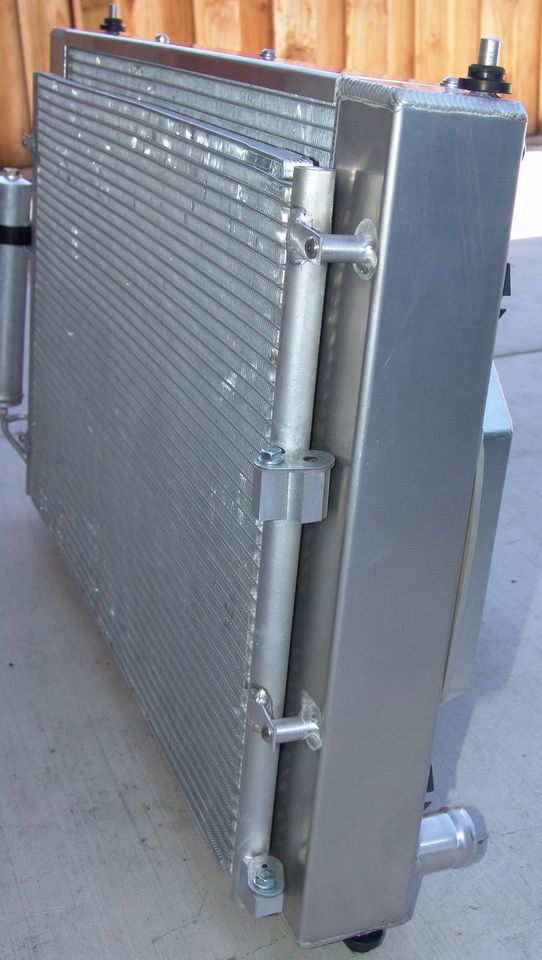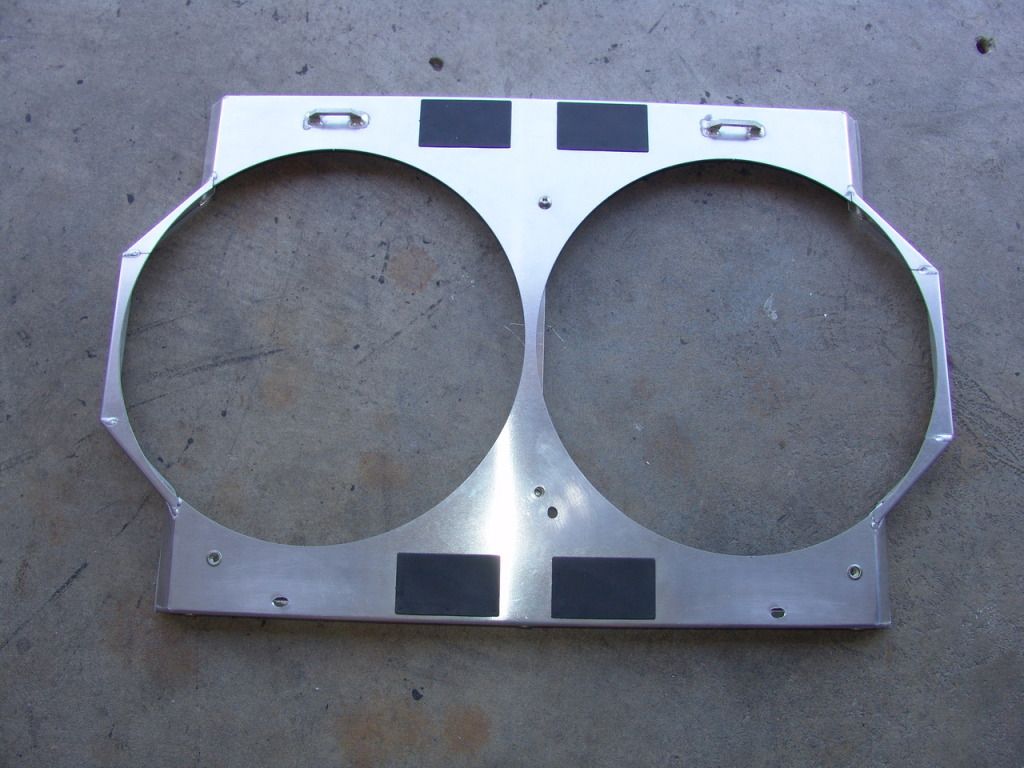 06-13-2012, 11:37 PM
06-13-2012, 11:37 PM
|
#1 (permalink)
|
|
Base Member
Join Date: May 2012
Location: San Jose, Ca.
Posts: 22
Drives: 2010 Nissan 370Z 6MT
Rep Power: 14
|
 Installing the largest possible radiator for your 370Z - Part 1
Installing the largest possible radiator for your 370Z - Part 1
Installation of a largest possible street racing radiator for your 370Z - Part 1
Disclaimer:
The DYI (Do it yourself ) below is only to share what I have been doing for the 370Z and Infiniti G37 cars. If you are lacked of good automotive modification knowledge or experience, please DO NOT perform this task yourself.
I shall assume NO responsibilities, whatsoever, for any consequential damage , injuries to you and/or your vehicle in this case if choose to do the work below by yourself.
The 370Z in general, depending on what you do to it, is NOT a simple vehicle to work on. If one thing goes wrong, many more can follow since the car has very tight tolerance and very low margin for error. To fix your mistakes can become very costly so be very careful.
Modification Objective :
This is a major DYI for the installation of a largest possible street racing radiator in your 370Z. This is applicable for BOTH 7AT and 6MT models. My car is a 6MT model in this case.
You shall be able to retain the A/C condenser for your A/C system with no problem at all. If installed properly and precisely, you will be just 100% safe and sound like factory.
With this radiator properly installed and reprogramming the fans ON/OFF temps as mentioned in the next sections below, you can push your supercharged or twin turbo version 370Z all day long without the fear of overheating EVER ( Unless you blow the head gaskets and/or having cracked heads/block ). This radiator is by far better than the CFS radiator, in my opinion. It takes more time and dedications to install, but the rewards is very worthwhile for the twin turbo, supercharged folks out there because :
Originally, this VVEL engine runs very hot to start with, especially when you constantly work the RPM above 4500. This heat will be greatly amplified when you add forced induction systems. With this radiator, you will be able to take advantage of the lower fan ON/OFF temps setting and therefore, making the overall engine and hood temperatures much lower than factory. This means longer engine life and other under hood components such as hoses, cables and harnesses.
There are NO other physical cooling modifications other than the radiator itself. The test results below are done with factory bumper and with the factory plastic under cover. Factory hoses and thermostats are unchanged.
In the future, I will make slight mods to the bumper air inlet and probably custom make a better under cover diffuser. That would help the air circulation even more.
The test result below is for a normally aspirated model since I have not twin turbo charged my car yet. You bet that is coming soon so I am preparing for it. Basically, I am waiting and see how I can make 2 separate intercoolers on the 2 sides instead of using the GTM one intercooler version, which requires that you remove the front crash bar, and I DON'T like that at all...... So, anyway, that will be my next major project.
Please refer to the 2 photos below for reference:
1) Factory Nissan radiator ( Left photo ) : 1 row at 17.5mm core width - Capacity is 2 US quarts. End tank thickness is 32mm
2) Racing radiator ( Right photo ) : 2 rows at 56 mm total core width ( 28mm per core ) - Capacity is 5 US quarts. End tank thickness is 70mm
 
Modification Result :
1) I am retaining the factory cooling fans because they are real good. No need to spend extra money for aftermarket fans and controller. The high cost is not justified.
2) A custom fan shroud is necessary since the factory shroud takes too much space and making the installation of this radiator impossible. Picture below shows the custom aluminum fan shroud.
3) Total original factory coolant capacity : 9-1/8 quarts
4) Total modified coolant capacity : 12-1/8 quarts
5) The entire system was filled with Toyota Super Long life 50/50 pink antifreeze. I really do not like the Nissan Long Life blue antifreeze at all since it left way more deposits than the Toyota one. My car has only 2900 miles and I could already see some deposits from the Nissan antifreeze.... yuck !!!

3) Setting for cooling fan ON/OFF temperatures:
a) Factory setting : With A/C off, both fans will be ON at 213F and OFF at 203F
b) Modified fan setting : With A/C off, both fans are re-programmed to be ON at 196F and OFF at 190F
Original factory radiator with original fan temperatures setting test result on a 88F - 90F afternoon :
1) Freeway cruising at 55mph to 65mph : 197F -202F
2) 1 hour of semi hard driving with multiple traffic stop and go with RPM range from 3000 to 7700 : 211F to 223F
As you can already see, even though the fans did get turned on at 213F, they became inefficient so that the temperature did climbed all the way up to 223F under high revs driving. So, with the flimsy factory radiator, it is impractical to turn ON the fan sooner because you will end up running it almost all the time since the radiator has reached its maximum heat exchanging efficiency. You will end up burning out your fans and/or the fans controller prematurely.
3) Oil temperature ( with 25 row Setrab cooler ) = 217F
BIG racing radiator with lowered fan temperatures setting test result on a 88F - 90F afternoon :
1) Freeway cruising at 55mph to 65mph : 183F -186F
2) 1 hour of semi hard driving with multiple traffic stop and go with RPM range from 3000 to 7700 : 190F to 197F
3) Oil temperature ( with 25 row Setrab cooler ) = 210F
As you can see, big improvement here...... no jokes
Part 2 will describe the installation and modification processes - Please stay tuned
|

|

|